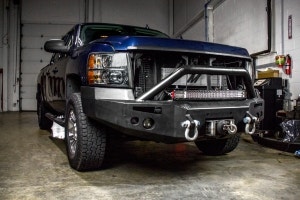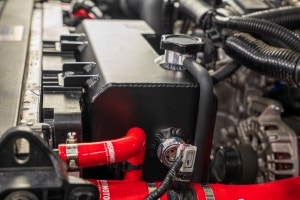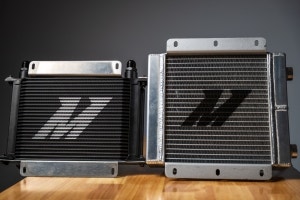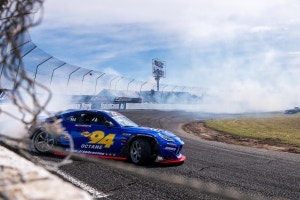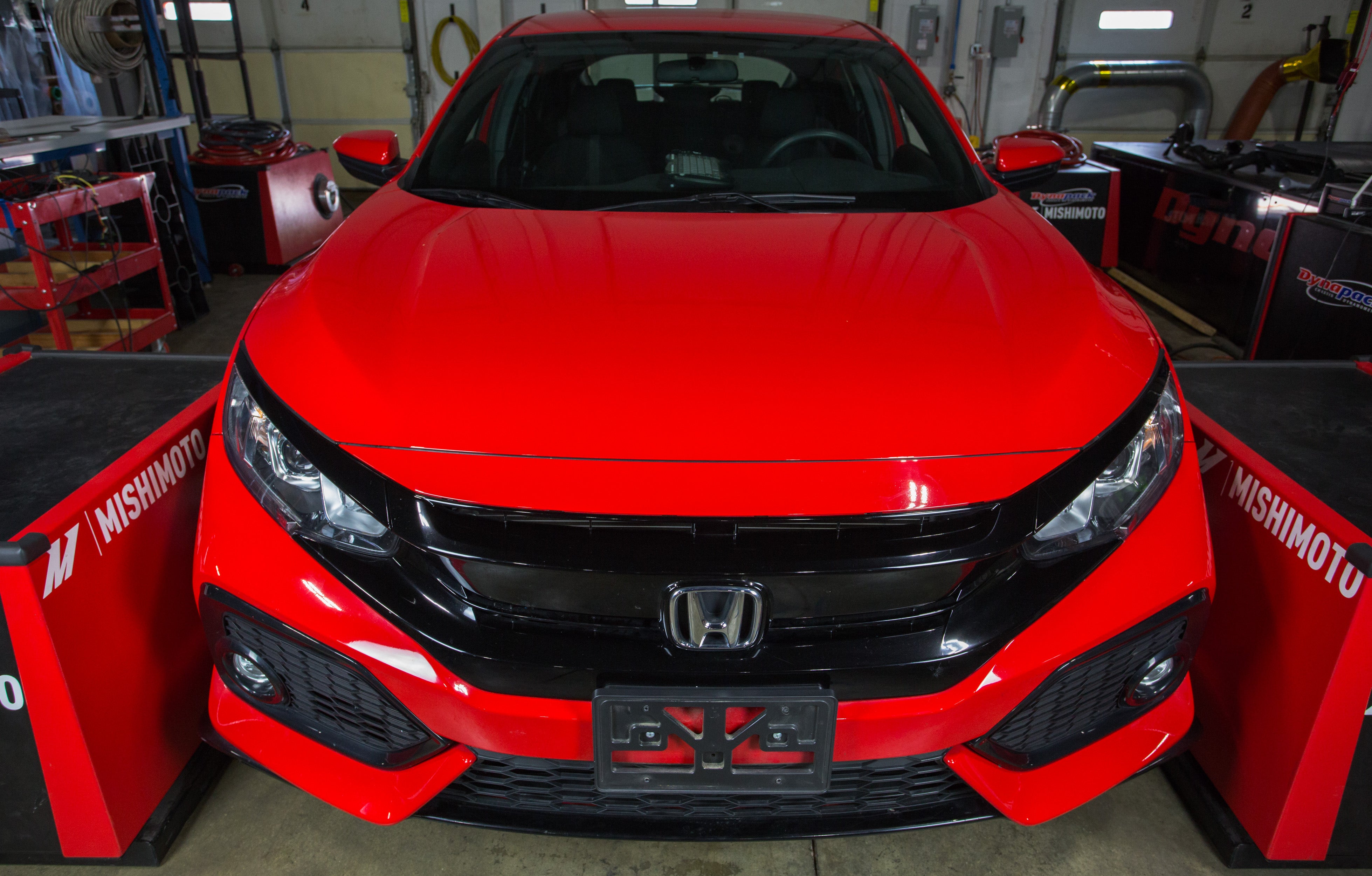
Bring a Jacket: Mishimoto's Honda Civic 1.5L Turbo Performance Intercooler R&D Part 4 - Dyno Results
There are two things that are guaranteed to get just about everyone at Mishi HQ away from their desk for at least a few minutes. The first is as soon as something new or unique rolls into one of the bays. It doesn't matter if it's a massive diesel truck, C6 Corvette, or one of the 10th Gen Civic Hatchback Sports. Nearly everyone wants to get a close look at what we've brought in for R&D. The second thing that gets people shuffling through the shop is when that new car makes its way to our Dynapack system. Our conspicuously red FK7 was no exception. Everyone here was curious about how the scrappy L15B7 performs with a little help from Mishimoto, and I'm going to venture to guess that you are too.
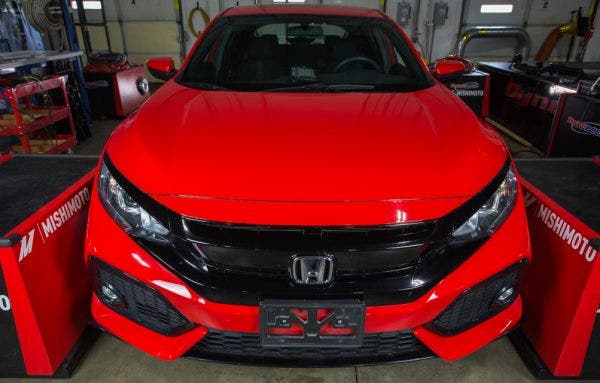
To get the most accurate and comprehensive results during our dyno-days, we lined up several different testing configurations to compare our improved intercooling components and gauge how well our equipment plays with others. Before we dive into the nitty-gritty of our range of tests, take a look at what our video team captured during our dyno day.
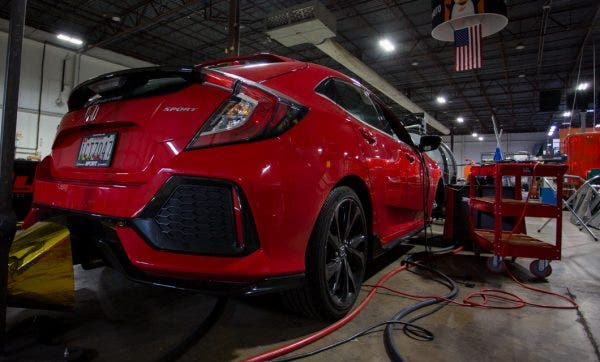
We're fortunate enough to have a thermal imaging camera here, which is ideal for capturing exactly what we are aiming to prevent: heat-soak. We started our series of tests with a baseline of the Civic's stock intercooling system. The baseline test consists of a series of pulls on the dyno from which we can determine how well the air flows through the system, the pressures related to that flow, and the temperature before and after the intercooler. As a part of the baseline, we also run a heat-soak test, which involves a series of back-to-back runs to test how long until the intercooler core soaks with heat from charged air and residual heat from the engine bay. From the last shot in the video, it's clear that it doesn't take much for the stock core to fill with heat.
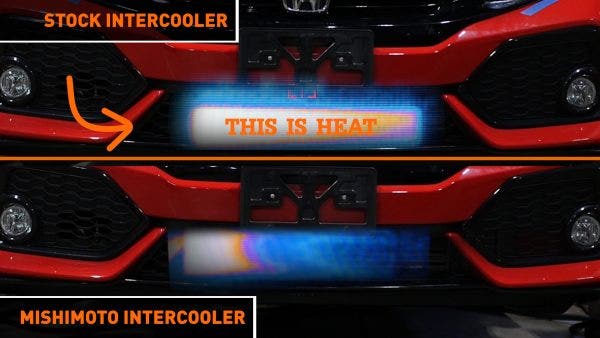
As we ran the test, the inlet temperatures spiked to around 240°F, and the outlet temperatures peaked at around 80°F. Not too bad from the relatively small tube-and-fin cooler. On our standard set of pulls, we slightly lowered inlet temperatures, but the outlet temperature neared 100°F, showing the effect of heat-soak on the intercooler.
[gallery type="slideshow" ids="12767,12766"]
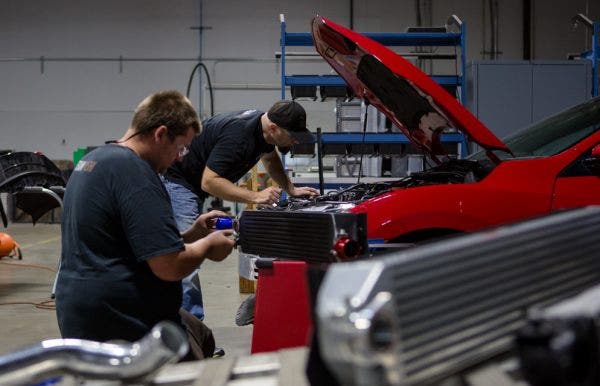
After recording the baseline results on the stock intercooling system, we started our parts swap. In order to obtain the best results, we started by first testing with the stock piping and our new intercooler design, and then installed our pipe kit for a final full system test. Here is how our upgraded intercooling system faired when put through the dyno torture test.
[gallery type="slideshow" ids="12774,12773"]
Right away, it's plain to see that our new construction is much more efficient at dissipating heat buildup than the stock unit. If you compare the two sets of graphs, you'll notice that the inlet temperature begins to have an influence on the outlet temperatures. This is the telltale sign of heat-soak. Now, with our system installed, no matter the inlet temperature, the outlet remains at a rock steady 75°F. This is a much better temperature for compressing into the cylinders of your turbo-Civic.
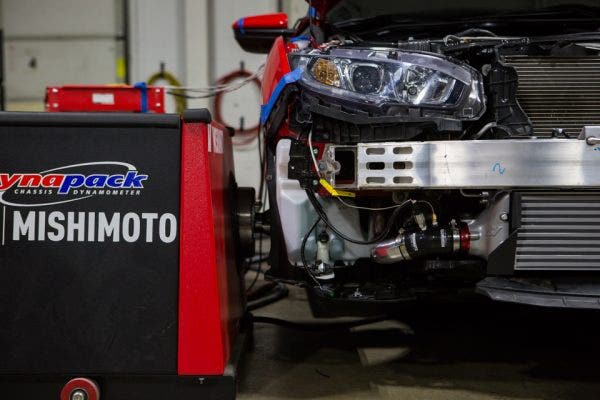
You may notice the excess of wires stemming from our loaner Civic. While it may seem like we are recreating Frankenstein's monster, we are actually capturing and recording as much data as possible to deliver the most accurate dyno results.
Since we're all enthusiasts here at Mishimoto, we know that one of the first modifications that anyone who just bought a turbocharged car seeks out is a tune. So, naturally we had a Hondata FlashPro shipped to New Castle in preparation for our Sport Hatch loaner. We programed the FK7 with Hondata's off-the-shelf +9psi tune, bumping the Sport Hatchback's peak wheel horsepower from 174 to 190 and a remarkable 40ft-lb increase in torque. There's even more potential from a custom tune. The downside is the rising temperatures.
With the boost turned up, the effects of heat-soak are much more apparent, especially when we ran several back-to-back runs. The effects of cooking your intercooler will ripple through the rest of the system. On top of robbing your engine of power, the air passing through your intercooler will transfer that heat into your radiator, in turn putting an extra strain on your cooling system. While we're all about turning up the boost on your Civic, we always recommend making sure the charged air is properly cooled, and here's why.
[gallery type="slideshow" ids="12772,12771"]
During our dyno pulls with the tune and stock intercooler equipment, we saw almost a 100°F jump in the inlet temperatures with a peak of about 340°F, the outlet temperatures hovering right around 115°F. What sounds like a typical ambient temperature in the southwest, and relatively cool considering the heat of the air entering the stock intercooler, the fact remains that the hotter the air, the harder it is to compress into the cylinders.
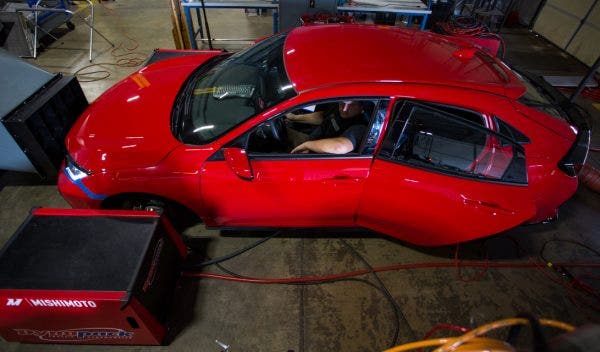
Once we had the tune set and our intercooler and piping installed, Dan jumped back into the driver's seat to test just how well our new core design stood up to the heat of increased boost. For the inlet temperatures, we saw similar numbers during our previous test, with peaks in the low-to-mid 300°F's. As for the outlet temperatures, well, I'll let our graphs speak for themselves:
[gallery type="slideshow" ids="12770,12769"]
Even with the boost pressure turned up, our new core design was able to shrug off the heat with ease, keeping the charged air temperature comfortably under 100°F. In fact, when we averaged the intercooler outlet temperatures between the stock tune and Hondata tune, we saw a 20-40°F temperature drop across the board all while retaining the same air pressure throughout the system. In most cases, with our intercooler installed, you could see near ambient air temperatures being crammed into your Civic's intake manifold, no matter how hard you push it.
There is a benevolent side effect to this increased flow and super cooling throughout your intercooler system, which is power. The perfect storm of an increase in volume, minimal pressure drop and the cool charged air yields max gains of 3 whp and 8 wtq with the intercooler alone, and picks up another horse when coupled with the piping kit on the stock tune. As with all turbo vehicles, the potential always increases once a tune is involved. The combination of the full Mishimoto intercooler kit and the Hondata +9psi remap will ramp your 1.5T powered Civic's max gains to 10 whp and 8 wtq on top of the reprogramming results. This jump in power could bring the power figures of a Sport Hatch up to the likes of the Si.
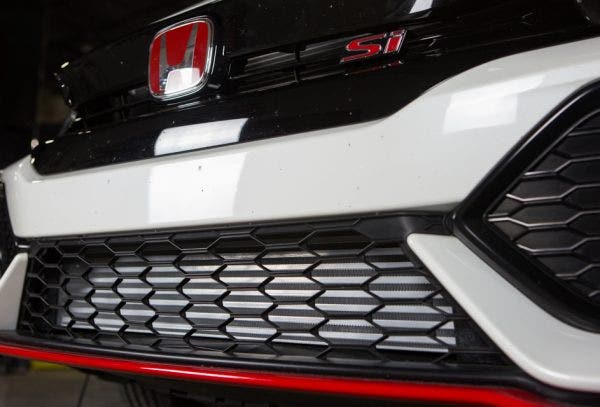
If you just bought an Si and you're worried about the standard Civics keeping pace with your sporty Civic, we made sure to test fit our components on this variant as well. While we didn't have the opportunity to record the power gains of our intercooler installed on the 10th generation Si, we can confidently state that it will keep the tuned up L15B7 just as cool.
As intrigued as we all were when inspecting every angle of the Civic Sport hatchback, hearing it bellow through the shop on the dyno, we were just as impressed with the sheer potential of Honda's first take on a production turbo engine. Many would question why it took them so long to unveil their engineering skill with the 1.5T, but they must've been doing their research. The 10th generation Civic is a remarkable platform. It isn't perfect, and suffers once the heat is turned up, but luckily our improved intercooler design turned out to be just as impressive and will help your turbo-Civics strive for perfection.
Thanks for Reading!
-Nick
